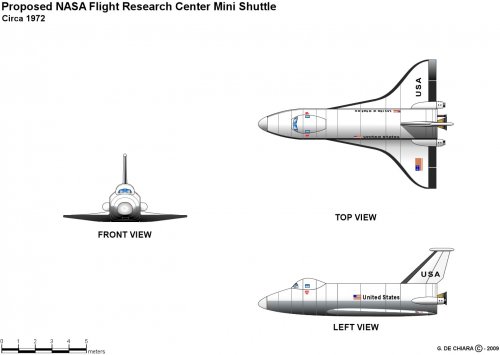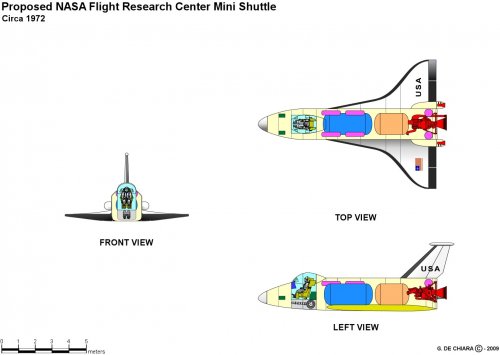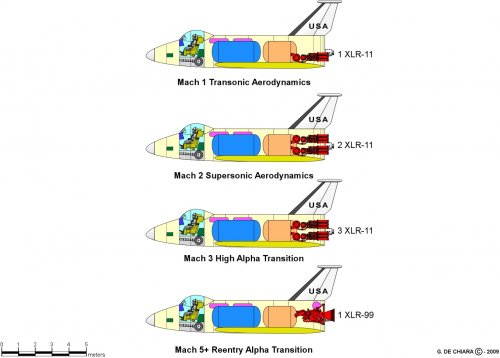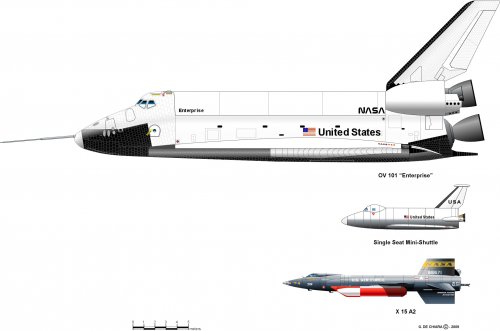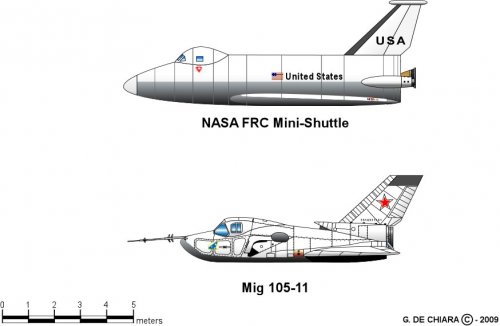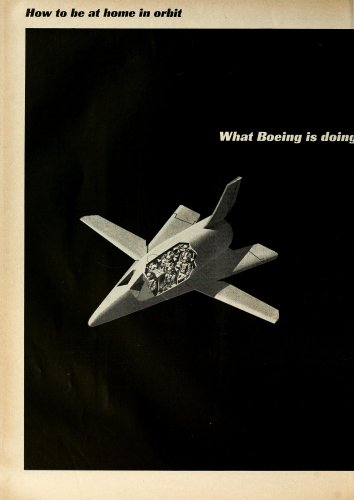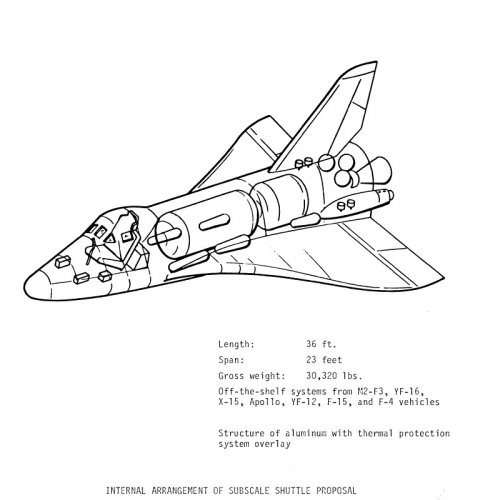archipeppe
ACCESS: Top Secret
- Joined
- 18 October 2007
- Messages
- 2,291
- Reaction score
- 2,338
According to Dennis Jenkins' "Space Shuttle" book in 1972 the NASA Flight Research Center proposed a single-seat manned scale down model version of the upcoming Orbiter in order to test the flight envelope between Mach numbers 1 to 5 (and even more).
At that times NASA has choosen the general configuration of the STS (040-C) to issue RFP to several industries (Boeing, Mc Donnell-Douglas, Grumman, North American-Rockwell and Lockheed-Martin) but it would be only in mid 1974 that NAR would issue the semi-final configuration of the STS (3/4) and even after the actual one (5/6). This means that the Mini-Shuttle would be rather different by tha actual one especially in wing configuration, OMS pods and tail, as also for the presence of bubble canopy to help pilot visibility.
The Mini-Shuttle would be a sort of incremental vehicle, exploiting a lot of elements taken by other programs (X 15, Apollo, M2-F3, YF-12, F-4, XF-15 etc.). This sort of "puzzle" space vehicle could use different engine, ranging from XLR-11 to XLR-99 (as much X 15), in order to achieve a various range of velocities and assets.
The proposal was rejected due to economical and political consideration. Unlike Russians (who actually built the unmanned scale down model of Bor-5 to test Buran configuration) the Americans did not performed any test (with the except of ALT flights) of the general STS configuration prior of Columbia's maiden flight in 1981.
At that times NASA has choosen the general configuration of the STS (040-C) to issue RFP to several industries (Boeing, Mc Donnell-Douglas, Grumman, North American-Rockwell and Lockheed-Martin) but it would be only in mid 1974 that NAR would issue the semi-final configuration of the STS (3/4) and even after the actual one (5/6). This means that the Mini-Shuttle would be rather different by tha actual one especially in wing configuration, OMS pods and tail, as also for the presence of bubble canopy to help pilot visibility.
The Mini-Shuttle would be a sort of incremental vehicle, exploiting a lot of elements taken by other programs (X 15, Apollo, M2-F3, YF-12, F-4, XF-15 etc.). This sort of "puzzle" space vehicle could use different engine, ranging from XLR-11 to XLR-99 (as much X 15), in order to achieve a various range of velocities and assets.
The proposal was rejected due to economical and political consideration. Unlike Russians (who actually built the unmanned scale down model of Bor-5 to test Buran configuration) the Americans did not performed any test (with the except of ALT flights) of the general STS configuration prior of Columbia's maiden flight in 1981.

